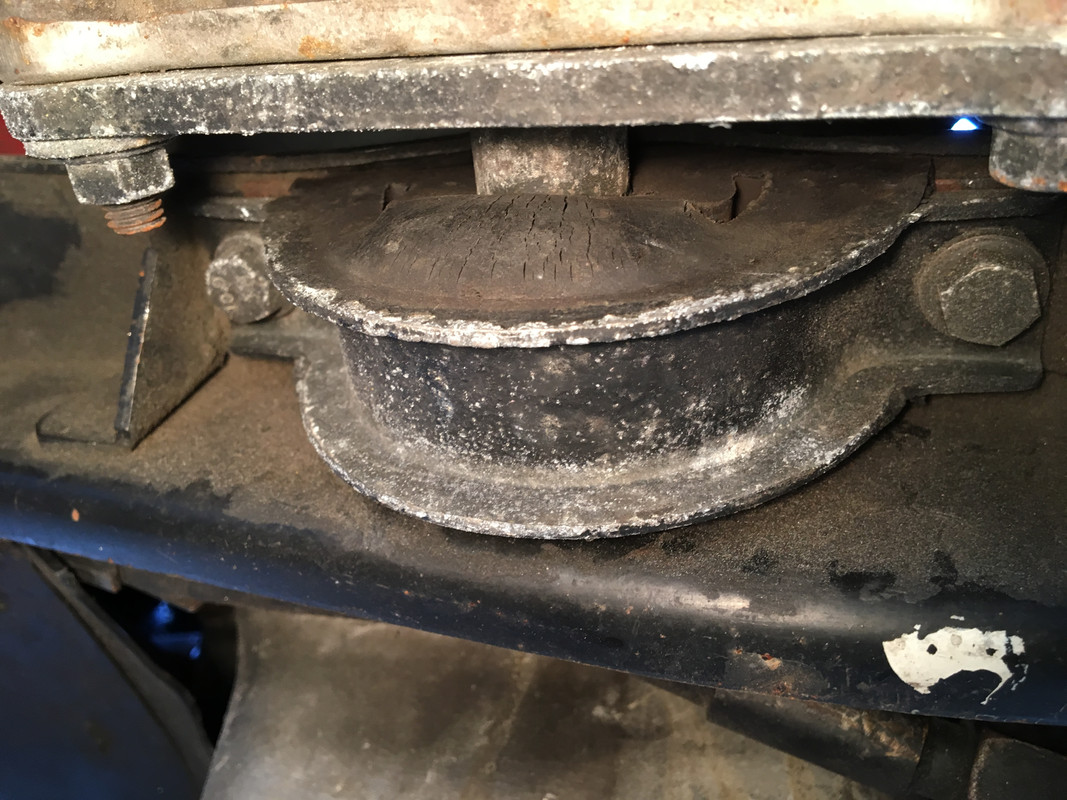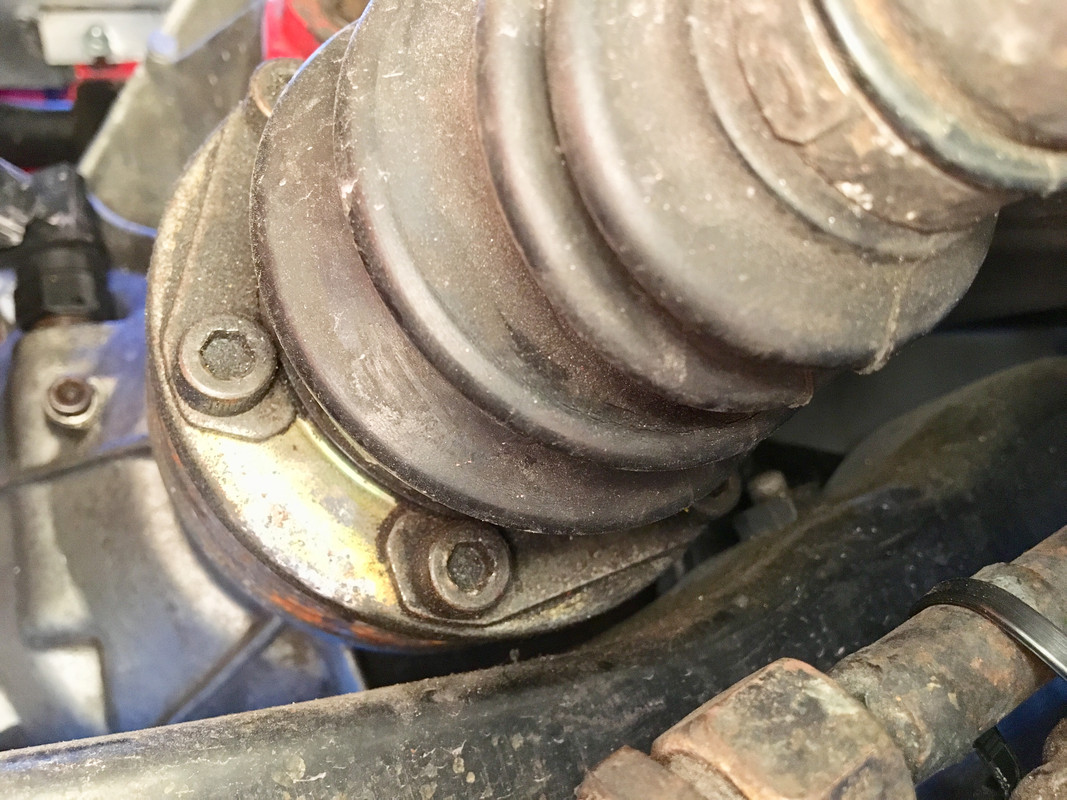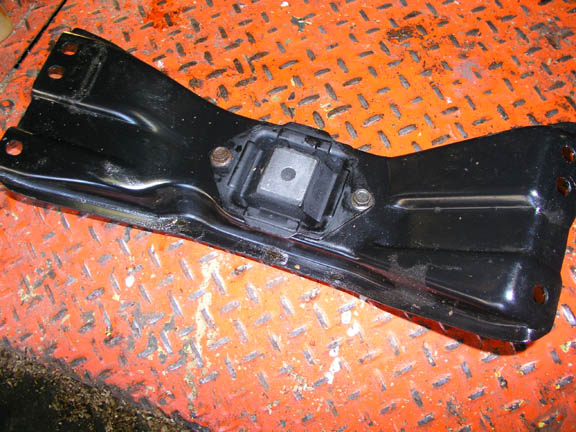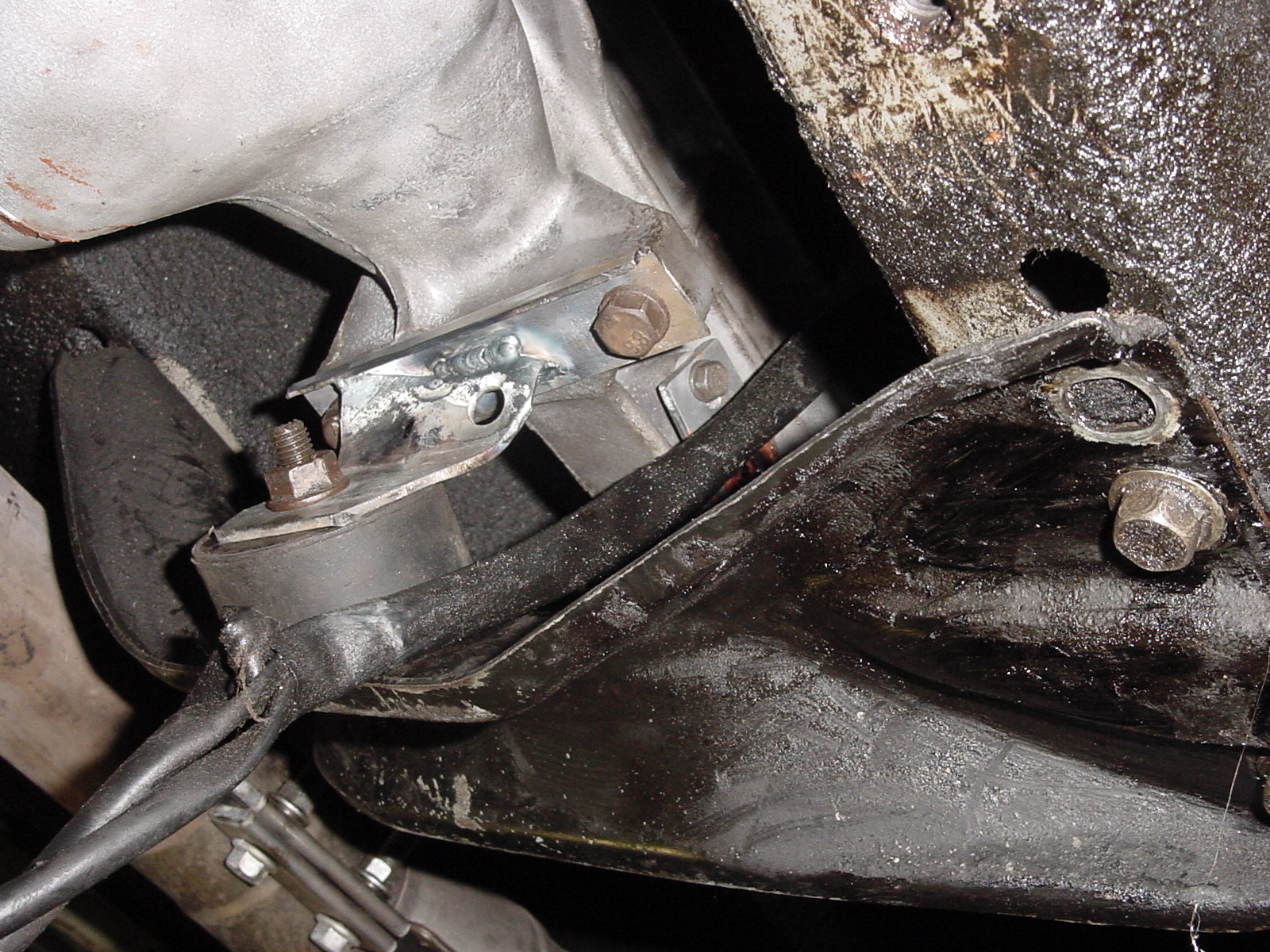Paul's post above reminded me of a product that was mentioned in the past. It is a liquid mix that is poured into a mold and forms a urethane casting. I'm sure there are many other similar materials out there, but here is the one that was discussed on the forum before:
https://www.smooth-on.com/products/task-16/
Maybe something like this is what Paul used, we'll see. But off the top of my head I imagine you could take a old mount, remove the rubber, set the remaining metal pieces in place, secure the openings and pour this around them. It seems doable. No idea how it lasts, how strong it is, if it is appropriate for this type application, etc...and it's not exactly cheap to experiment with. But possibly it could be a way to make a better lower mount.
I'm sure this is overly simplified. But starting with just the "cushion" half of the mount assembly, by separating it from the solid back-plate/inner post (the arrowed portion):
I did not find a picture of the "cushion" portion without the rear mounting plate, so just pretend it is separate from here on. [If I recall the two can be pulled apart, as the center post pivots within the sleeve.]
Remove the rubber from the metal frames that surround it, and the metal sleeve in the middle (arrows):
Set the surrounding metal frame flat on a board, blocking the back side and locating the center sleeve. Then pour the urethane mixture into the void area within the frame and around the sleeve (blue arrow):
In the above picture it looks like this manufacturer has used a thicker wall sleeve in the middle (red arrow). Seeing this makes me think you could make a solid "filler" section to locate within the urethane when it is poured. Either a heavy wall sleeve (like above) or even a larger 'oval' shaped piece to take up much of the area where the urethane goes. This would make the mount even stiffer/more solid if that was your goal. Otherwise, smaller metal "filler" pieces could be placed within it (sort of like rebar placed in concrete when it is poured) to add strength to the urethane (to prevent tearing/failure) if needed.
I imagine it will take a little more development, but really how hard can it be?







